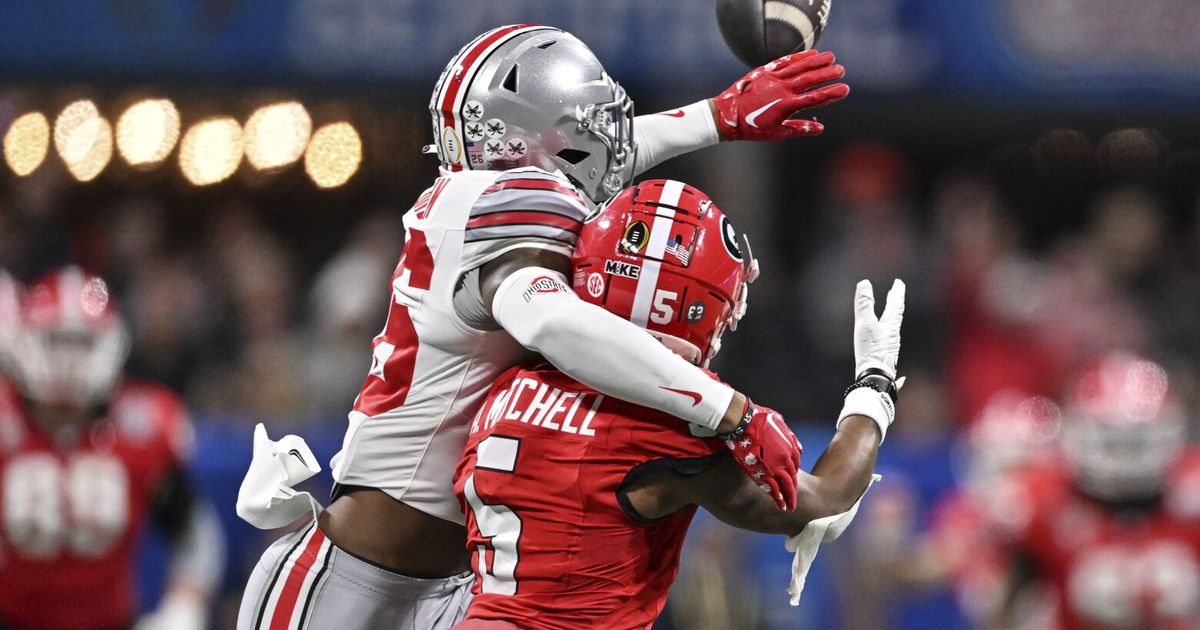
Ohio State’s decision to cancel a home-and-home series with Washington was merely the latest blow to the Pac-12 schedule delivered by Midwestern powers.
Recall that in the fall of 2019, Michigan bailed on a two-game series with UCLA.
Then the Wolverines pushed the makeup date for a trip to Seattle — the original game was postponed by COVID — all the way back to the 2028 season.
And now the Buckeyes have canceled dates with UW in 2024 and 2025.
We’re beginning to think the Big Ten can’t be trusted.
Ohio State’s move is, of course, directly related to the recent plundering. The Big Ten schedule will become more arduous with the addition of the Los Angeles schools in 2024, and the Buckeyes don’t want an unnecessary West Coast trip.
The Huskies were “very disappointed” by the news, in the words of athletic director Jen Cohen. And across the Pac-12 footprint, there is justifiable concern about the impact of realignment on football schedules.
Will road trips to USC and UCLA for conference matchups (starting in 2024) prompt Big Ten teams to stop playing out-of-league games on the West Coast against the remaining in the Pac-12 schools?
There are 17 matchups under contract between the conferences, starting in 2023.
Arizona
2028: at Nebraska
2031: vs. Nebraska
Cal
2025: vs. Minnesota
2028: at Minnesota
Colorado
2023: vs. Nebraska
2024: at Nebraska
2026: at Northwestern
2027: vs. Northwestern
Oregon
2029: at Michigan State
2030: vs. Michigan State
2032: vs. Ohio State
2033: at Ohio State
Oregon State
2024: vs. Purdue
Utah
2028: at Wisconsin
2033: vs. Wisconsin
Washington
2028: vs. Michigan
Washington State
2023: vs. Wisconsin
(Sources: School websites and FBschedules.com.)
Several games are not in jeopardy. There’s no reason for Nebraska to cancel on neighboring Colorado, for example. And Wisconsin will make the trip to Pullman later this year.
Others could get axed, with the Big Ten teams paying the cancellation penalty (as Ohio State is doing with Washington).
But as with so many issues involving the Pac-12, let’s pause before hitting the panic button.
Five thoughts on the future of football scheduling in the wake of the latest news:
1. We should know much more next fall, when the Big Ten finalizes its schedule rotation for the 2024 season and beyond.
How often will teams visit USC and UCLA, thereby reducing the desire to schedule trips to Pac-12 campuses? With nine conference games and 16 teams, there should be windows available.
The timeframe will be as important as the rotation itself. Will the Big Ten set the schedule well into the 2030s, providing significant clarity on which teams are playing where?
Or will the conference simply lock in a rotation for four-to-six years, which would make schools hesitant to book anything longer term?
2. The latest development is further proof that the Pac-12 should not drop to an eight-game conference schedule. It doesn’t make sense to trade a league game for non-conference creampuff that won’t generate ticket sales or TV ratings.
The options for quality opponents are taking a hit with Brigham Young’s entry into the Big 12. (The Cougars no longer need Pac-12 dates to fill out an Independent schedule.)
If BYU isn’t available and the Big Ten teams are wary of committing, then attractive opponents for the fourth non-conference game will be scarce.
3. The Pac-12 should assess the viability of adding a league game — that’s right: Consider playing a 10-game conference rotation.
It would ensure quality content for fans and help with the financial piece: Intra-conference games are free, whereas non-conference home games against Group of Five and FCS opponents often cost in excess of $500,000 (and are getting more expensive by the year).
Also, expansion of the College Football Playoff (in 2024) essentially guarantees a berth for the Pac-12 champion and, crucially, will allow at-large access to teams with multiple losses. (Perhaps the greatest flaw in the current model has been the ongoing exclusion of two-loss teams.)
That said, a 10-game conference schedule only workable if the Pac-12 expands.
4. The latest round of realignment could make neutral-site games more appealing for Pac-12 teams and their potential opponents.
Arlington, Houston and Atlanta are always options, but the new venues in Las Vegas and Los Angeles could make more sense geographically for teams in the Big Ten, SEC and Big 12.
Certainly, SoFi Stadium is appealing because of the exposure it provides in a vital recruiting region. We suspect it will play an important role in future Pac-12 scheduling strategy.
And let’s not forget the potential for dates with the ACC, which only plays eight conference games and could provide significant game inventory.
5. Lastly, the Pac-12 should consider home-and-home series against USC and UCLA.
Sure, the 10 remaining schools will be loath to acknowledge the defectors, but objectively, those matchups make sense: The road trips are manageable and would help with recruiting, and the home dates would generate strong ticket sales.
Also, the L.A. schools will need non-conference games on the West Coast given the air mileage awaiting them in league play.
It might be a difficult contract to sign from an emotional standpoint, but we see home-and-home series against USC and UCLA as valuable dates in the future.